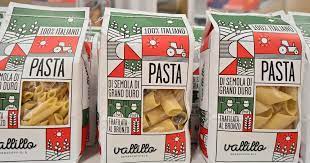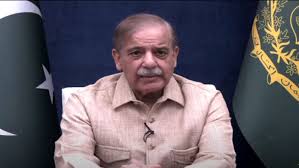Italy calls crisis meeting as pasta prices jump almost 20 percent

Rome: In Italy, a simmering debate over a jump in pasta prices has forced the government to convene a crisis meeting this week.
Adolfo Urso, the country’s business enterprise minister, called for a Thursday meeting of a new commission to discuss the increase in the price of pasta, according to an official at the Ministry of Enterprises and Made in Italy, who spoke on the condition of anonymity to speak candidly about government matters. Pasta prices were up 17.5 percent year-over-year in March, local media reported, citing the ministry.
The price jump is more than double Italy’s consumer price inflation, which stood at 8.1 percent in March, according to the European Central Bank, and comes as the price of wheat has dropped. On Thursday, the commission will assess the role that raw material, energy and production costs may be playing in the price increase.
Consumer groups have accused producers of speculation and filed an official complaint, asking authorities to investigate. Producers say a mix of factors — including higher energy costs and supply chain disruptions and inflation — is driving up their costs, forcing them to charge more for pasta, a staple of the Italian diet.
Urso said in a statement that no matter the outcome, consumers will benefit because the increased attention to this issue has already prompted many companies to say the rise in pasta prices is only temporary.
Pasta, at about $2 a box, is still relatively inexpensive. But any dispute in Italy involving pasta, which is so closely intertwined with the national identity, attracts outsize attention. (One estimate suggests that more than 60 percent of Italians eat pasta daily.)
“I can gnocchi believe the prices, I’d re-fusilli to pay,” one social media user said in response to news of the crisis meeting.
“Tagliatelle me about it!” another responded.
There is “something inherently hilarious” about the Italian government convening a crisis meeting about pasta, another user said.
This made me laugh. I know it shouldn’t, but there is something inherently hilarious about the Italian govt definition of a crisis being expensive pasta.
The government’s reaction shows the “symbolic, emotional, cultural value that pasta has for Italians,” said Fabio Parasecoli, a professor of food studies at New York University.
Italian pasta is produced from durum wheat, whose prices, according to Italy’s largest agricultural body, Coldiretti, have fallen by 30 percent since last year. Making pasta only requires adding water to the wheat, the group said in a statement, hence the rise in prices seemed unwarranted.
Assoutenti, a consumer rights group that published a survey on regional pasta prices in April, blames the increase on producers.
“There is no justification for the increases other than pure speculation on the part of the large food groups who also want to supplement their budgets with extra profits,” Furio Truzzi, the group’s president, said in an email.
“Pasta is a primary food for the Italian diet. Increasing its price would be like raising the price of corn cob for Americans,” he added.
Assoutenti’s report found that pasta prices had on average increased by 25 percent from last year, with some cities like Modena witnessing a nearly 50 percent hike. Only in 12 of 110 provinces in Italy could a kilogram of pasta be purchased for less than $2.20.
Pasta producers, however, point to a rise in production costs. Energy, packaging and logistics have registered a significant hike in prices, adding to costs, said Ivana Calò, a spokeswoman for Unione Italiana Food, an industry body. The rise in costs is in line, she said, with the increase in food prices.
“The impact of pasta inflation on Italian families’ budget will be limited” since it only costs a few euros, she wrote in an email.





